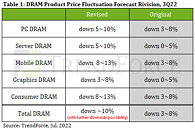
G.Skill Readies AMD EXPO Memory that Applies "Zen 4" DDR5-6000 "Sweetspot" Settings
G.Skill is readying variants of its DDR5 memory series that feature the AMD EXPO technology. A rival to Intel XMP 3.0, EXPO makes it easy to use overclocked memory modules with AMD Ryzen 7000 series platforms, by applying the advertised settings of the memory with one click in the motherboard's UEFI setup program, or Ryzen Master. What sets EXPO apart from XMP 3.0 is that it includes not just the memory frequency and main timings, but also fine-grained settings that are unique to the AMD platform. It's also different from DOCP, which was essentially a motherboard UEFI setup program-based feature that translates XMP settings to AMD-compatible settings on a "nearest neighbor" principle.
We've learned from earlier reports that DDR5-6000 will be the "sweetspot" memory frequency for the Ryzen 7000 "Raphael" processor, much in the same way DDR4-3600 is for the Ryzen 5000 "Vermeer," as this is when you'll be able to run the FClk at its highest possible frequency—3000 MHz in case of Raphael and 1800 MHz in case of Vermeer—without engaging a 1:2 divider between FClk and memory clock. At least one G.Skill SKU featuring EXPO has been confirmed, the Trident Z5 "F5-6000J3038F16G." G.Skill already sells Trident Z5 DDR5-6000 kits in the market, but those only feature XMP 3.0, and run the memory at CL30-40-40-96 instead of CL30-38-38-96 that the EXPO-equipped kit will. This is because the EXPO profile includes all the various AMD-specific sub-timings needed to tighten the tRCD, tRP, and tRAS. Various memory manufacturers are expected to announce AMD EXPO memory kits late-August, alongside Socket AM5 motherboards, and the Ryzen 7000 processors themselves; with market availability expected in mid-September.
We've learned from earlier reports that DDR5-6000 will be the "sweetspot" memory frequency for the Ryzen 7000 "Raphael" processor, much in the same way DDR4-3600 is for the Ryzen 5000 "Vermeer," as this is when you'll be able to run the FClk at its highest possible frequency—3000 MHz in case of Raphael and 1800 MHz in case of Vermeer—without engaging a 1:2 divider between FClk and memory clock. At least one G.Skill SKU featuring EXPO has been confirmed, the Trident Z5 "F5-6000J3038F16G." G.Skill already sells Trident Z5 DDR5-6000 kits in the market, but those only feature XMP 3.0, and run the memory at CL30-40-40-96 instead of CL30-38-38-96 that the EXPO-equipped kit will. This is because the EXPO profile includes all the various AMD-specific sub-timings needed to tighten the tRCD, tRP, and tRAS. Various memory manufacturers are expected to announce AMD EXPO memory kits late-August, alongside Socket AM5 motherboards, and the Ryzen 7000 processors themselves; with market availability expected in mid-September.





























































